A presentation at North Korea’s Mass Games in Pyongyang.
North Korea acted like a completely different country in 2017. Gone are the hyperbolic threats and missile launches were rapidly replaced by handshakes, hugs and overtures for peace. But this is what is happening on the surface. When you dig deeper, the nation has not changed very much. Let’s examine the recent news surrounding North Korea may reveal more tension and conflict buried beneath the nation’s seeming diplomatic and peaceful transformation.
Mixed Signals
On the campaign trail this year, President Trump stated that he and Chairman Kim the two “fell in love” during their meeting in June.
Trump and Chairman Kim Jong Un have kept a friendly public dialogue despite considerable tensions as their countries continue to negotiate nuclear and peace deals. At the latest meeting between President Trump and South Korean president, Moon Jae-in, President Trump reportedly asked Moon to pass along a friendly message to Kim.
“The message was that President Trump has a very friendly view of Chairman Kim and that he likes him, and so he wishes Chairman Kim would implement the rest of their agreement and that he would make what Chairman Kim wants come true," Moon said Saturday, according to USA Today.
These overtures are in contrast to the widening gap in negotiations between the United States and North Korea.
The North Korean government’s promises to dismantle its Yongbyon nuclear complex came with strict conditions. If Washington would first ease its sanctions and sign a peace agreement, deconstruction would begin. North Korea has also expressed frustration toward South Korea’s ongoing small-scale military drills.
The Trump administration has, in response, demanded for North Korea to take the first step of opening up all of its nuclear facilities to weapons inspectors prior to releasing sanctions and signing for peace. Both nations are unwilling to yield to one another’s conditions.
"I think right now, we are absolutely stuck," said Sue Mi Terry, a senior fellow at the Center for Strategic and International Studies in an interview with NPR.
It appears as if Trump will indeed meet with Kim again early in 2019, according to comments made by national security adviser John R. Bolton on December 4. On the contrary, according to the commentary of Robert Carlin, a nonresident fellow at the Stimson Center, North Korea has expressed an unwillingness to participate in a summit “if the US does not take ‘credible measures’ to address North Korean ‘concerns’ in high level talks” with priority and agility.
Weapons Program Continues
North Korea imposed a voluntary moratorium on long-range ballistic missile tests this year as an act of goodwill leading up to the Trump-Kim summit in June. This was a much-welcomed concession as North Korea was active in testing missiles and nuclear weapons in 2017.
But there are indications the country is still moving forward with their nuclear program. Although development at its main test site has halted, the North Korean government has developed more than a dozen other sites. According to commercial satellite images released in November, North Korea has continued and significantly bolstered its ability to launch a nuclear attack. Though this does not technically breach North Korea’s promises, it violates its spirit of its steps towards peace.
Last week, North Korea’s state news agency (KCNA) stated that Kim Jong Un “supervised a newly developed ultramodern tactical weapon test.” The KCNA further noted the Supreme Leader’s excitement in “seeing the power of the tactical weapon” and its ability to “increase the defense capability” of North Korea.
On Monday, December 4, the Daily NK reported that North Korea has directed its navy to take a “Battle Readiness Posture,” which described as a mid-level state of alert for its military forces.
A South Korean Train and North Korean Soldier Cross the Border
Last week, a South Korean train crossed into North Korea for the first time in 10 years. While being a symbolic sign of progress and peace, the train’s mission is also to assess what it would take for North Korea’s rail system to modernize.
In their meeting in April, Kim Jong Un asked President Moon Jae-in for help rebuilding their decrepit rail system, which is in “embarrassing” shape. Moon agreed.
But this is not the first time the South has done an assessment of North Korea’s rail system. In 2007, South Korea studied the North’s rail system in limited scope as a train ran between the countries five times per week. This process continued until relations chilled between the two countries in 2008 and the line was eventually shut down.
As in 2008, talks between the North and South can easily stall and progress could halt. The continuation of such a project hinges on the ongoing nuclear negotiations between North Korea and the United States.
As the South Korean train made its way into North Korea last week, another North Korean soldier defected through the DMZ to South Korea. Unlike last year’s dramatic escape, no shots were fired at this solder and little is publicly known about him.
This soldier is just one of the tens of millions of North Koreans still silently suffering under the regime’s cruel rule. The food situation in the country has not improved markedly. As these international tensions, conflicts, agreements continue to swing between war and peace, Crossing Borders will continue to help those who flee into China and send our prayers into this dark nation. We might not be able to change the circumstances of the authorities or principalities who delegate and represent nations, but Crossing Borders will continue to serve and work those we can reach. Please pray for us to be in safety, hope and strength.


